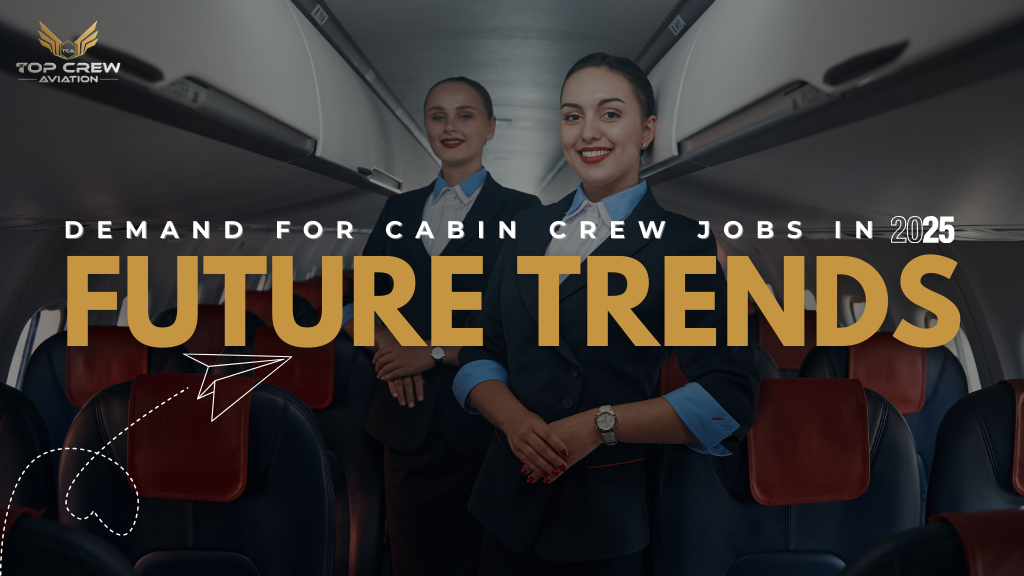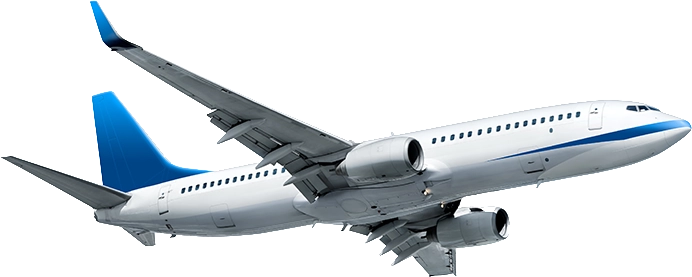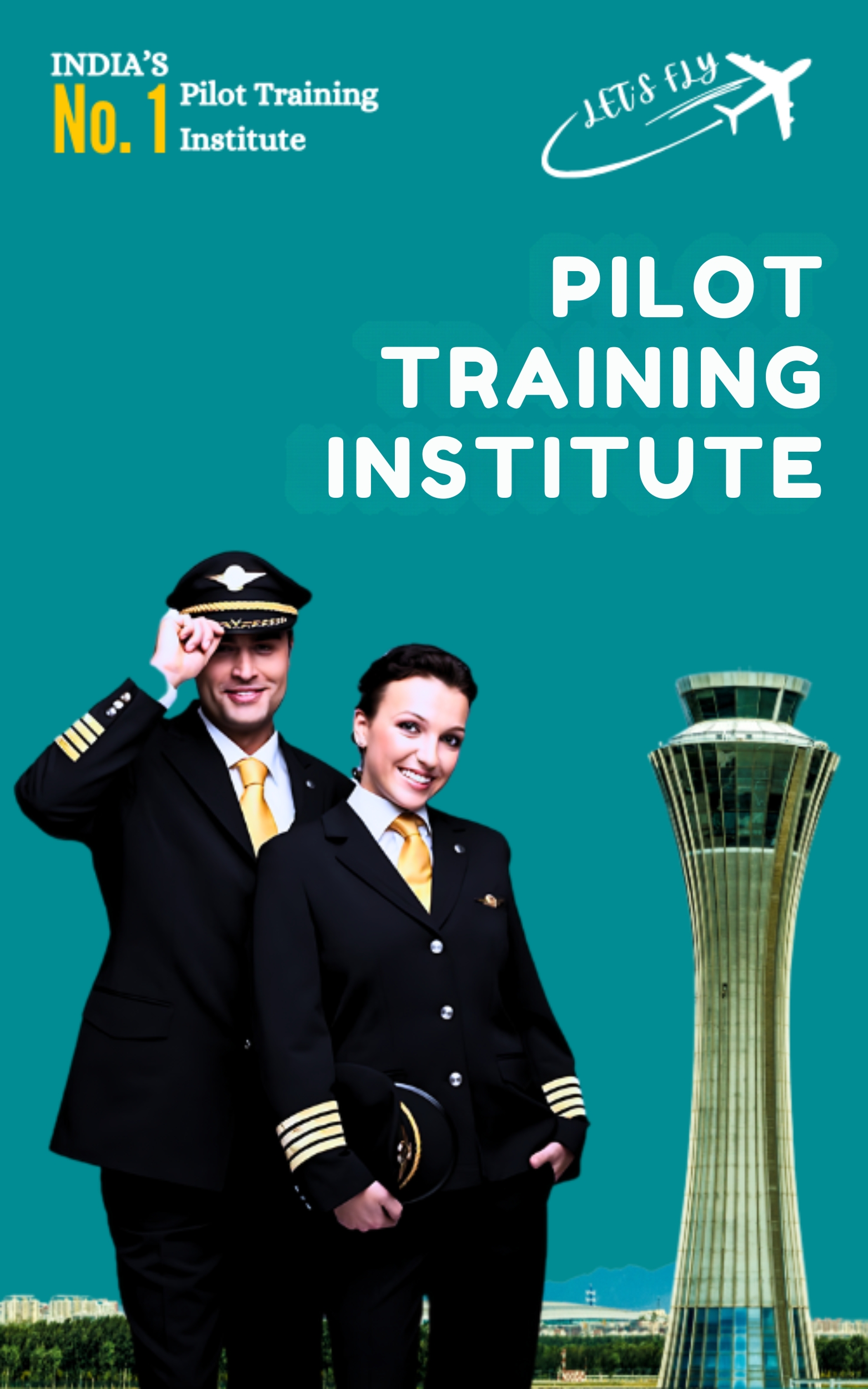Demand for Cabin Crew Jobs in 2025 – Future Trends
2025 is a strong year for cabin crew careers. Growing passenger numbers, rapid fleet expansion, wave-after-wave of retirements, and the entry of new airlines are all pushing demand higher. Airlines are evolving, too: premium economy cabins are larger, ultra-long-haul routes are back, and low-cost carriers are scaling up short-haul frequencies. All this translates into a bigger need for highly trained, customer-focused flight attendants. If you are considering this profession, there has rarely been a better time to start. Top Crew Aviation (TCA) supports aspiring candidates with industry-aligned Cabin Crew and Pilot training, soft skills coaching, and placement assistance to help you step confidently into the market.
Why 2025 is a Pivotal Year for Cabin Crew
The aviation industry has always been resilient. After a complex period earlier in the decade, airlines focused on rebuilding schedules, modernizing fleets, and improving in-flight service quality. By 2025, passenger demand has stabilized at high levels in many regions, with tourism, business travel, and visiting-friends-and-relatives (VFR) segments all contributing.
At the same time, competition for talent is heating up. Airlines are not only hiring more cabin crew; they are also redefining what the role looks like. Safety and service remain the core, but there is a greater emphasis on empathy, cultural fluency, medical awareness, digital tools, and the ability to manage diverse passenger needs. This blog explores the demand landscape, the factors driving it, regional dynamics, hiring preferences, and the career outlook through 2025 and beyond.
Key Factors Driving Demand in 2025
1) Increased Air Travel
Air travel demand in 2025 is supported by three pillars:
- Leisure and Tourism: Many destinations are running tourism campaigns, visa simplifications, and new direct connections. Families and young professionals are taking more short breaks and long-haul holidays.
- Business Travel Rebound: While virtual meetings remain, critical face-to-face events, conferences, and sales visits are back. Hybrid corporate travel policies encourage fewer but higher-value trips, often in premium cabins—where service ratios are higher and cabin crew staffing requirements rise.
- VFR and Education Travel: International students and diaspora communities continue to fly frequently, boosting year-round load factors.
What it means for cabin crew: Higher load factors and denser schedules require more crew per day across more flights. The quality expectation is also higher—passengers want smooth boarding, clear communication, and warm service.
2) Fleet Growth
Airlines are inducting new-generation aircraft (A320 neo family, 737 MAX family, A350s, 787s) to expand capacity while reducing fuel burn. Larger aircraft and higher utilization mean more seats to sell and more flights to staff. New cabin layouts—especially larger premium economy sections—need crew who are trained to deliver differentiated service levels.
What it means for cabin crew: More aircraft equals more rosters. Inductions also trigger type-specific training and cross-qualification opportunities for crew, opening routes to long-haul operations and higher allowances.
3) High Retirement Rates
A significant share of experienced cabin crew and pursers are reaching retirement eligibility. Many carriers are rebalancing their seniority ladders, creating room for accelerated promotions for new joiners who perform well.
What it means for cabin crew: Faster progression from junior flight attendant to lead/CSM/purser roles, and opportunities to move into training, recruitment, or safety departments earlier than in previous cycles.
4) New Airlines and Route Expansion
New entrants—both full-service and low-cost—continue to launch, while established carriers open new city pairs and revive suspended routes. Secondary airports are becoming important growth nodes.
What it means for cabin crew: More base locations, more hiring windows, and specialized roles (e.g., language-specific crew for new markets or ultra-long-haul service specialists).
Read Also – How to Get a 100% Scholarship for Pilot Training | Top Crew Aviation
Regional Trends in 2025
Regional Trends in 2025 – Cabin Crew Job Demand Worldwide
The aviation industry in 2025 is marked by a revival of global air travel, continuous fleet expansion, and an evolving passenger service culture. Cabin crew opportunities are being shaped not only by the rebound in demand but also by how regions are positioning themselves in terms of connectivity, service quality, and lifestyle benefits for employees. Let’s take a closer look at each region.
Europe
Network Diversity
Europe remains one of the most complex aviation regions in the world, balancing dense short-haul operations within the Schengen area alongside competitive transatlantic and long-haul markets. Low-cost carriers like Ryanair, easyJet, and Wizz Air continue expanding routes across secondary and tertiary cities, ensuring that demand for cabin crew remains high for short-haul operations. At the same time, legacy carriers like Lufthansa, Air France-KLM, and British Airways are putting emphasis on premium cabins and long-haul connections, creating opportunities for crew trained in high-service standards.
Hiring Cycles
A distinct characteristic of the European market is its seasonal hiring pattern. Airlines see major spikes in summer and winter holiday traffic, which drives the need for temporary or seasonal cabin crew contracts. These often serve as gateways to permanent roles, depending on performance and operational needs. In 2025, airlines are increasing the use of “seasonal-to-permanent” pathways, providing entry-level candidates with a structured progression plan.
Skills Focus
European airlines place high importance on multilingualism—English paired with another European language (such as Spanish, French, German, or Italian) is highly desirable. Crew members are also expected to demonstrate strong customer-service skills, familiarity with premium products like business and premium economy, and a strong focus on safety and compliance. With EU-wide aviation regulations being among the strictest globally, safety training is both rigorous and non-negotiable.
Opportunity Snapshot
In 2025, Europe continues to offer consistent openings for entry-level crew. Southern Europe (Spain, Italy, Portugal, Greece) experiences particularly high demand due to tourism-driven traffic. Rapid network changes mean airlines may launch new recruitment drives at short notice, especially when new routes or aircraft are introduced. This makes Europe an attractive market for adaptable, multilingual, and service-oriented candidates.
Middle East
Hub Expansion
The Middle East, particularly the Gulf states (UAE, Qatar, Saudi Arabia), has established itself as a global connector region. Mega-carriers like Emirates, Qatar Airways, and Etihad are expanding wide-body fleets to serve more long-haul destinations. In 2025, Saudi Arabia’s Vision 2030 initiative is also fueling massive investments in aviation, with Riyadh Air emerging as a new competitor. This expansion directly translates into thousands of new cabin crew positions.
Service Differentiation
Unlike low-cost markets, the Middle East continues to define itself by luxury and hospitality. Airlines compete on cabin innovation, gourmet meals, and cultural experiences on board. As a result, they recruit cabin crew who not only meet international safety standards but also bring exceptional soft skills, grooming, and cultural sensitivity. Training in etiquette, fine dining service, and intercultural communication is emphasized far more than in other regions.
Lifestyle and Tax Considerations
The Middle East offers some of the most attractive compensation packages globally. Crew members benefit from tax-free salaries, housing allowances, medical coverage, and extensive travel benefits. However, schedules can be intense, with long-haul rotations and extended periods away from home. The region’s cosmopolitan crew environment, though, is highly appealing to candidates seeking international exposure.
Opportunity Snapshot
High demand continues in 2025, especially for candidates willing to relocate. Airlines seek individuals who are internationally minded, fluent in English, and adaptable to multicultural teams. Clear promotion tracks exist, with opportunities to move into purser, instructor, or ground leadership roles after a few years of service.
Asia-Pacific (APAC)
Scale and Variety
The Asia-Pacific region is the fastest-growing aviation market in 2025. With mega-markets like India and China driving enormous passenger numbers, and strong tourism in Southeast Asia and Oceania, demand for cabin crew is consistently high. Domestic air travel in countries like India, Indonesia, and China is surging, while long-haul connectivity from Singapore, Tokyo, Bangkok, and Sydney continues to rebound.
Low-Cost Carrier Growth
Budget airlines such as AirAsia, IndiGo, and Scoot are adding aircraft rapidly. These carriers hire in large batches, offering opportunities for young candidates with minimal prior experience. Short-haul operations dominate, but the growth of long-haul low-cost services (e.g., Scoot, AirAsia X) means cabin crew also gain exposure to international flying.
Language and Cultural Fluency
Multilingual skills are crucial in APAC. English is a baseline requirement, but additional languages such as Mandarin, Hindi, Japanese, Thai, or Bahasa Indonesia make candidates stand out. Cultural awareness and the ability to cater to diverse passenger profiles (from business travelers to mass-market tourists) are also highly valued.
Opportunity Snapshot
In 2025, the region is a goldmine of entry-level opportunities. India, in particular, is seeing a boom in aviation hiring due to rapid fleet expansion by Air India, Indigo, and Akasa Air. Japan and South Korea maintain strong demand, especially for bilingual crew. For experienced professionals, long-haul expansion offers higher allowances and international exposure.
North America (Bonus Insight)
Fleet Modernization
Airlines in the United States and Canada are replacing older fleets with more fuel-efficient aircraft. This modernization creates parallel demand for cabin crew trained on new safety systems and cabin layouts. Carriers such as Delta, United, and American Airlines continue to lead in recruitment volume.
Labor Dynamics
The North American market is heavily influenced by labor unions and collective agreements. While this provides cabin crew with stronger protections, it also means that hiring windows are often tied to contract cycles. Nevertheless, high retirement rates in the U.S. ensure a steady flow of openings in 2025.
Opportunity Snapshot



